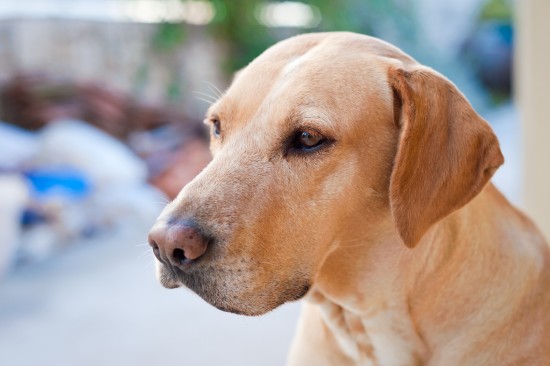

While exactly how territorial any dog will prove to be will vary from breed to breed and dog to dog, most dogs display territorial behaviour to some degree, and this is simply an instinctive part of being a dog! Generally we associate territorial behaviour with male dogs more than female dogs, and it is certainly true that males tend to display stronger territorial instincts than females. However, female dogs are also territorial to certain extent too, and regardless of the gender of your dog and whether or not they are neutered, you will generally be able to identify territorial behaviour of some type within your own dog or dogs.
Territorial behaviour in the dog can manifest in a variety of ways, and generally when correctly trained and managed, this does not pose a problem. However, being overly territorial or possessive over the home and family can cause an issue in some cases, so it is important to recognise your dog’s own territorial instincts and assess whether or not they are appropriate.
Read on to learn more about dogs and territorial behaviour.
Territorial behaviour in the dog can come in many guises, and some forms are more overt than others! Obvious territorial behaviour may be demonstrated by guarding and patrolling the home and garden to guard against the approach of other dogs or people, and acting as a deterrent to intruders.
Dogs may also be territorial about their family and handlers, and react negatively if another dog or person approaches them, or become clingy and pushy for attention if their human is paying attention to someone else.
Dogs may also be territorial over their possessions; this is known as resource guarding, and may manifest within the home if the dog is possessive about their bed, toys, food or other resources, and responds negatively if another dog, person or pet approaches their things.
Dogs, particularly male dogs, have a reputation for liking to pee on everything, and this is one of the most overt demonstrations of canine territorial behaviour. Urine marking allows the dog to designate the borders of their territory, what is theirs, and provide an indication and warning to other dogs that this space is taken, and not to intrude. Generally, dogs do not scent mark within the home as their homes are unlikely to be impinged upon by strangers, but your garden and common areas that you pass daily when walking your dog are all fair game!
Dogs can display their territorial instincts in many ways, and sometimes, this manifests as aggression. The aggression may be targeted towards other people, dogs or both, and is actually a defensive reaction rather than an aggressive one, as once the perceived potential intruder backs off to a safe distance, the dog will back down and not pursue them.
Territorial aggression may be displayed by common and simple behaviour such as barking at the sound of the doorbell, and assuming that your dog is under control and will stop when you tell them to, this is not generally a problem.
However, if your dog displays aggression such as barking, growling, pursuing another person or dog on their territory or blocking the way of people who have a right to be there (such as the post man) this is obviously an issue.
It is vitally important to deal with overtly territorial behaviour in the dog if this results in aggression, as this behaviour is inappropriate, and potentially dangerous. While it is to be lauded that your dog wishes to protect you and your home, nevertheless, poor training and socialisation are usually the causes of unchecked territorial aggression, and this is something that it is important to tackle.
First of all, review your dog’s living situation and see if you can identify any reason why your dog might feel particularly on edge, on guard, or insecure within their home. Are they being subjected to stress, not secure in a routine, or in the middle of any upheaval? It is of course always possible that your dog is simply displaying territorial aggression because this is what they have always done, and they have never had cause to think that this is inappropriate, or been trained out of it.
Once you have addressed any potential trigger factors or issues that might lie at the root of territorial aggression, you will need to take an inclusive approach to re-training your dog. Socialisation is one of the keys to this, to ensure that your dog is generally comfortable with both other dogs and other people, and does not automatically view them as a threat. Then, work on positive reinforcement training with your dog, working to keep their attention diverted when a potential aggression trigger comes near, and giving them treats and praise for keeping their attention on you.
Ignore bad behaviour or remove your dog from the trigger of it, and praise them warmly when they begin to calm down. Over time, your dog should become more amenable to the presence of other dogs and people passing by, and not pose a potential threat to your visitors!
Copyright © 2005-2016 Pet Information All Rights Reserved
Contact us: www162date@outlook.com